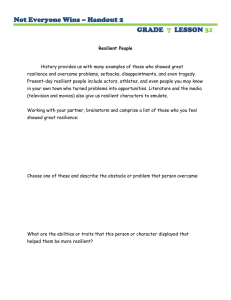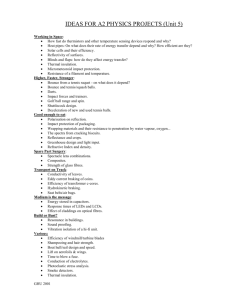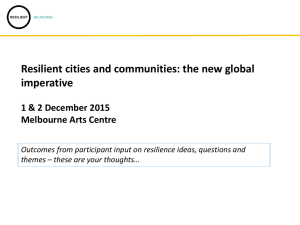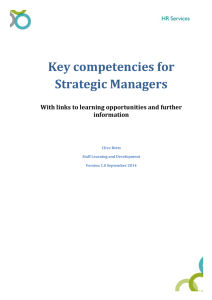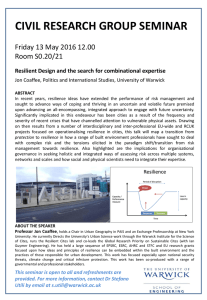Liberty University – Institute for Military Resilience Helping Children Bounce
advertisement
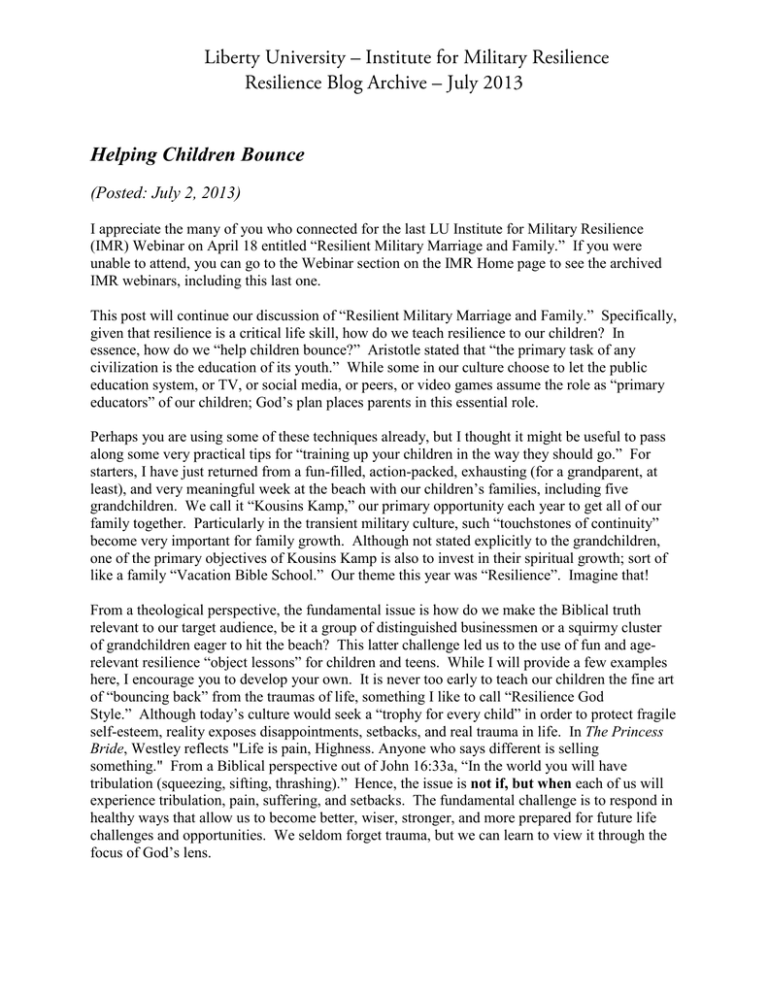
Liberty University – Institute for Military Resilience Resilience Blog Archive – July 2013 Helping Children Bounce (Posted: July 2, 2013) I appreciate the many of you who connected for the last LU Institute for Military Resilience (IMR) Webinar on April 18 entitled “Resilient Military Marriage and Family.” If you were unable to attend, you can go to the Webinar section on the IMR Home page to see the archived IMR webinars, including this last one. This post will continue our discussion of “Resilient Military Marriage and Family.” Specifically, given that resilience is a critical life skill, how do we teach resilience to our children? In essence, how do we “help children bounce?” Aristotle stated that “the primary task of any civilization is the education of its youth.” While some in our culture choose to let the public education system, or TV, or social media, or peers, or video games assume the role as “primary educators” of our children; God’s plan places parents in this essential role. Perhaps you are using some of these techniques already, but I thought it might be useful to pass along some very practical tips for “training up your children in the way they should go.” For starters, I have just returned from a fun-filled, action-packed, exhausting (for a grandparent, at least), and very meaningful week at the beach with our children’s families, including five grandchildren. We call it “Kousins Kamp,” our primary opportunity each year to get all of our family together. Particularly in the transient military culture, such “touchstones of continuity” become very important for family growth. Although not stated explicitly to the grandchildren, one of the primary objectives of Kousins Kamp is also to invest in their spiritual growth; sort of like a family “Vacation Bible School.” Our theme this year was “Resilience”. Imagine that! From a theological perspective, the fundamental issue is how do we make the Biblical truth relevant to our target audience, be it a group of distinguished businessmen or a squirmy cluster of grandchildren eager to hit the beach? This latter challenge led us to the use of fun and agerelevant resilience “object lessons” for children and teens. While I will provide a few examples here, I encourage you to develop your own. It is never too early to teach our children the fine art of “bouncing back” from the traumas of life, something I like to call “Resilience God Style.” Although today’s culture would seek a “trophy for every child” in order to protect fragile self-esteem, reality exposes disappointments, setbacks, and real trauma in life. In The Princess Bride, Westley reflects "Life is pain, Highness. Anyone who says different is selling something." From a Biblical perspective out of John 16:33a, “In the world you will have tribulation (squeezing, sifting, thrashing).” Hence, the issue is not if, but when each of us will experience tribulation, pain, suffering, and setbacks. The fundamental challenge is to respond in healthy ways that allow us to become better, wiser, stronger, and more prepared for future life challenges and opportunities. We seldom forget trauma, but we can learn to view it through the focus of God’s lens. Given this preamble, let’s consider a couple of these object lessons (we call them “science experiments” with the grandchildren) which are drawn from the principles contained in Resilient Warriors: Tennis Ball v. Egg Experiment: • • • • Part I - Give each child a raw egg. The experiment is to determine if an egg or a tennis ball will bounce higher. Clearly it helps if the leader “hypes” the event… having each child try to make their egg bounce. The predictable outcome is that all the eggs are smashed a la “Humpty Dumpty.” As a PS, have a hose ready to wash down the target area! Part II - Then send the children off as a team to find hidden tennis balls which have their name on them. After all children are reassembled, they then bounce their tennis balls, with predictable contrast to the eggs. Part III – Discuss in the context of “bouncing back” from life challenges, using age-relevant examples of setbacks and trauma. The basic question is “Would you rather be a tennis ball or an egg?” Now compare the tennis ball- egg contrast in the experiment with II Corin 4:8,9 (eg- “struck down, but not destroyed”). Part IV – Use the tennis balls during the week in other object lessons and normal play activities. The graphic picture of Biblical resilience you have drawn for the children will provide a valuable touchstone as you navigate future life experiences together. Choose Forgiveness experiment: • • • Part I - Use slices of apple and lemon. Have a child eat an apple slice, then have them bite into the bitter lemon. Take their picture at the moment the sour lemon takes effect. At this point, most children will agree that they would not want to live with such a bitter taste in their mouths. Part II – Talk about the importance of “loosening one’s grip” on bitterness, and choosing forgiveness (pg 147, Resilient Warriors). Discuss the “ten most powerful words” in the human language: “I was wrong. I am sorry. Will you forgive me.” Have them practice asking for and granting forgiveness. Part III – Act out the story of Joseph, using family members as characters. Use beach towels as robes, etc. Illustrate the times when Joseph was a tennis ball (v. an egg), and when he chose forgiveness (v. bitterness). The Hope Diamond experiment: The basic content parallels our last Blog entry regarding the “Hope Diamond.” • • Part I - Obtain an inexpensive, large “diamond” -- we found a grapefruit sized piece of cut glass for less than $10. Use this “diamond” to discuss how diamonds are made, how they are valued, etc. Discuss the history of the Hope Diamond in the Smithsonian, and the reality that it “brought out the worst” in many people. Part II - Prepare a chart with a diamond outline on it, with 26 blanks corresponding to the 26 words of John 3:16, described on page 203 of Resilient Warriors. Tell the children about another “Hope Diamond” that brings out the best in people – John 3:16 as highlighted by Max Lucado in 3:16 – The Numbers of Hope. Have them fill in the blanks of the chart with the words of John 3:16, using this to discuss God’s role and our role in this “26 word parade of hope.” Armed with these examples, I challenge you to develop more resilience object lessons of interest and value to your children. Resilient Warriors depicts the principles. Now you have the opportunity to make them real and relevant to your family? You no doubt can improve on the ones presented above and develop many others which are suitable to your particular family setting. Your true reward will be watching your children play back the biblical principles as they apply the simple illustrations to their own life experiences. You will find yet once again that God’s Word does not return void. I wish each of you God’s very best for your family, as well as good success in mentoring others regarding effective parenting and mentoring amidst the challenges of real life. Respectfully in Christ, Bob Dees

